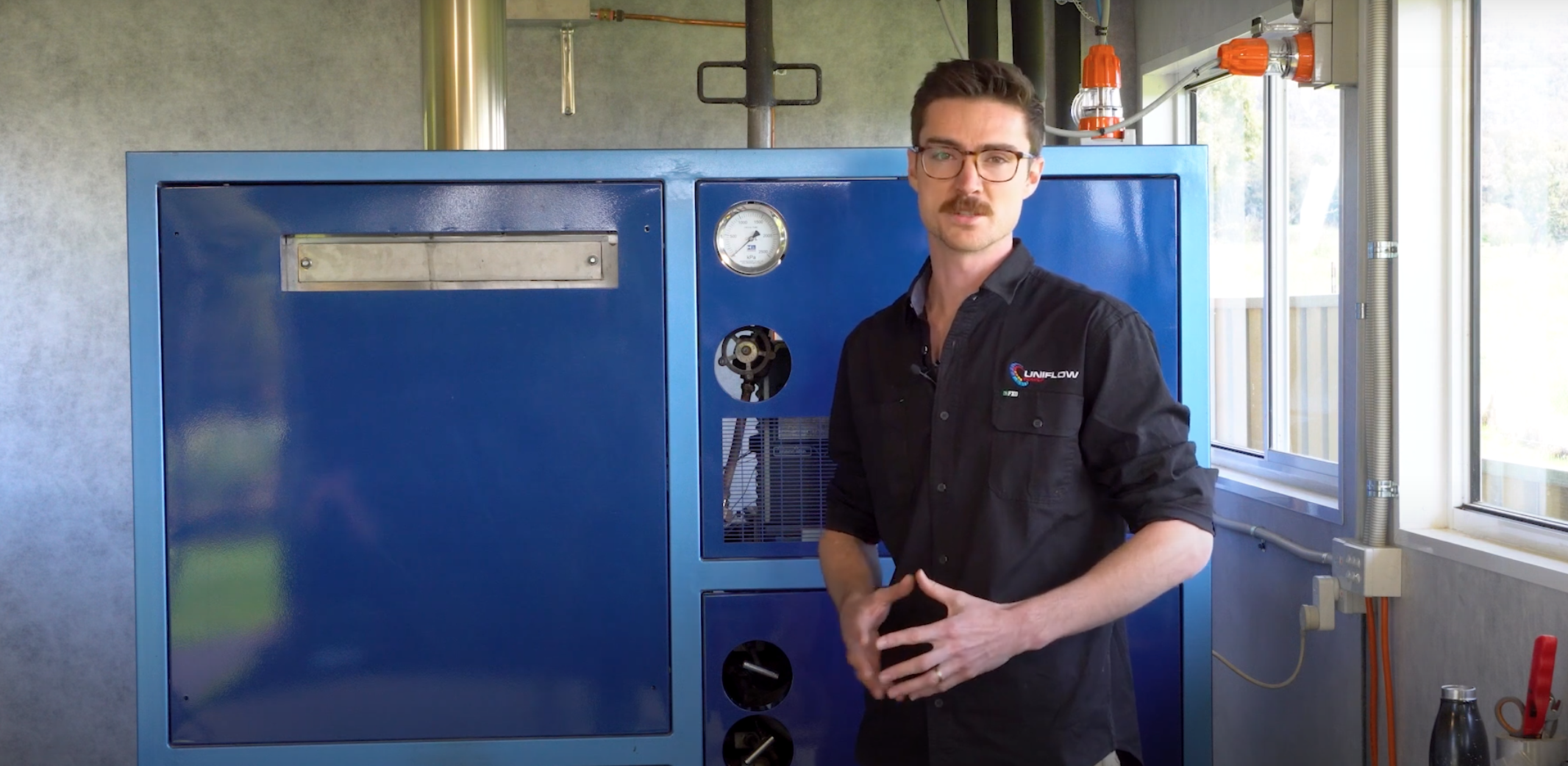Uniflow Power Ltd is an unlisted company based in Canberra, Australia that is dedicated to commercialising this small-scale renewable energy technology. Find out more About Us.
Uniflow Power is dedicated to commercialising the world’s first small-scale biomass-fired combined heat and power generator.
A Combined Heat and Power (CHP) generator produces electricity and useful heat. At Uniflow we are currently working to finalise product design for manufacture of the world’s first small-scale biomass fired CHP generator – The Cobber.
The Cobber produces up to 5kW of electricity and 20kW of thermal energy by combusting a range of woody fuels. It provides enough power and heat to service households, workshops, or even small communities.
The Cobber currently produces up to 5kW of electricity and 20 kW of heating. In the future the Cobber will also produce distilled water and deliver rotary mechanical power. To find out more about our technology visit our Technology Page.
A product that provides renewably fuelled electricity, heating, and hot water on demand, at any time of the day or night.
For billions of people around the world, agricultural residue such as sisal, coconut shell, olive pips, or forestry off-cuts are important sources of fuel for heating and cooking. Many communities have no grid connected electricity or live on ‘poor grids’ that do not provide reliable electricity. Often these communities rely on expensive and polluting diesel fuelled generators.
The Cobber will enable energy-poor communities to use their own locally available natural organic fuel to produce heat and power.
A second-generation Cobber is also being designed for developed world markets.
Millions of households in the cold climate areas of developed nations already use biomass for some or all of their space and water heating. A second-generation Cobber is being designed for developed world markets. This Cobber will be optimised for automatic fuelling using fuel pellets or biogas.
The Cobber Beta will provide renewably fuelled space heating, electricity, and hot water, but can be run almost completely ‘unattended’. It will also be highly integrable with other renewable energy technology such as solar, batteries, and easily integrated into modern grids.

